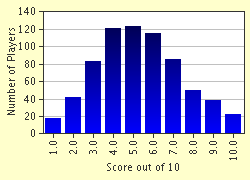Quiz Answer Key and Fun Facts
1. At what average range do most CQB engagements occur?
2. As you approach an open doorway or portal in a CQB environment, what tactic is used to cover the doorway and see what is beyond, while keeping in motion?
3. In general, there are two speeds at which CQB entries are made. They are referred to as "Stealth" and "_____". Fill in the blank.
4. Which of the following weapons is LEAST likely to be carried by a police entry team?
5. Preparing for an operation, your team lines up just outside the door and waits for the order to make entry. What is this formation called?
6. Entry teams, usually requiring speed and decisive action, generally do not wear body armor, as it tends to slow them down.
7. Your team has just performed a rapid entry into a room, and after a brief frenzy of activity, there are no more active hostiles. What one-word phrase should you now communicate to your team?
8. Your team is about to breach a door and make entry into a room. The lead man prepares a hand grenade, specifically an M84. What warning will he issue to the team before rolling it into the room?
9. Due to the Geneva and Hague Conventions, police SWAT teams performing CQB entries are prohibited from using hollowpoint bullets, since they are deemed to cause "unnecessarily grievous" wounds.
10. "Sweeping" your teammate is a preferred tactic for maintaining multiple points of cover.
Source: Author
Stillman
This quiz was reviewed by FunTrivia editor
thejazzkickazz before going online.
Any errors found in FunTrivia content are routinely corrected through our feedback system.


